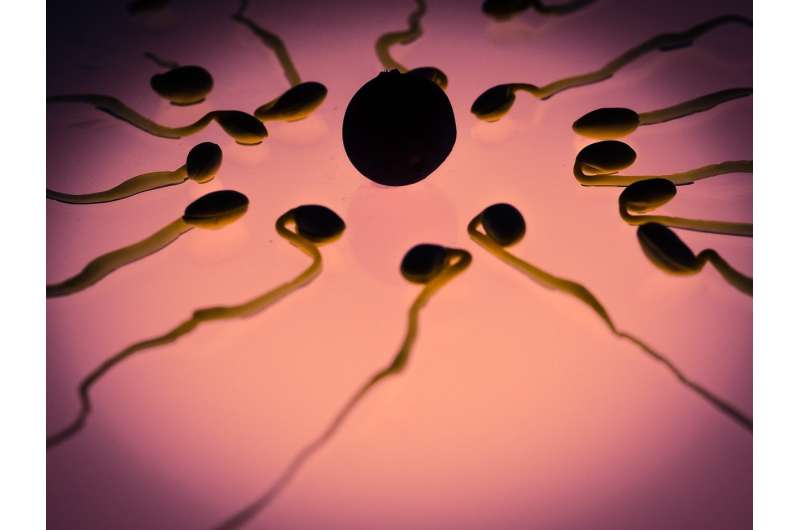Credit: CC0 Public Domain
COVID-19 may negatively affect sperm quality and reduce fertility in men, according to research published in Reproduction. The study indicates that COVID-19 infection can cause increased sperm cell death, inflammation, and oxidative stress, resulting in lower sperm quality and potentially reducing fertility. These findings provide the first, direct experimental evidence that the male reproductive system could be targeted and damaged by COVID-19, and suggest that men's reproductive function should be evaluated after infection to detect and avoid further fertility problems.
COVID-19 is a coronavirus that causes respiratory illness and in older people, or those with particular underlying medical problems, the infection can be severe and even lead to death. The World Health Organisation announced a global pandemic of the virus on 11 March 2020. The disease is predominantly transmitted through respiratory droplets that infect the lungs, kidneys, intestines and heart, however, other studies have also found that it can infect the male reproductive organs, impairing sperm cell development and disrupting reproductive hormones. These findings suggest that the male reproductive system is potentially vulnerable to COVID-19 infection, however the effects of the virus on male reproductive function are not clear.
Ph.D. student and Lead Researcher Behzad Hajizadeh Maleki, and his team from Justus-Liebig-University, investigated the effect of COVID-19 infection on male fertility by evaluating markers of inflammation, oxidative stress, sperm cell death and semen quality. Analysis was done at 10-day intervals for a follow-up time of 60 days, in 84 men with confirmed COVID-19 and 105 age-matched healthy controls. A urology expert determined that all the men were fertile. In men with COVID-19, markers of inflammation and oxidative stress in sperm cells were significantly increased by more than 100% compared to age-matched healthy controls, pathways that facilitate sperm cell death were activated, and sperm concentration was reduced by 516%, mobility by 209% and sperm cell shape was altered by 400%. This state represents oligoasthenoteratozoospermia, which is one of the most common causes of subfertility in men.
"These effects on sperm cells are associated with lower sperm quality and reduced fertility potential. Although these effects tended to improve over time, they remained significantly and abnormally higher in the COVID-19 patients, and the magnitude of these changes were also related to disease severity," Behzad Hajizadeh Maleki comments.
These novel findings add to our current understanding of the disease and reveal that men recovering from COVID-19 may find it harder to conceive, due to abnormally low sperm quality. This suggests reproductive function should be monitored and evaluated by health professionals following infection, to detect and avoid more severe reproduction problems in the future.
Behzad Hajizadeh Maleki adds, "The results from this study also suggest that the male reproductive system should be considered a vulnerable route of COVID-19 infection and should be declared a high-risk organ by the World Health Organisation."
More extensive studies, with longer follow up, are necessary to validate the conclusions drawn from this study and determine exactly how COVID-19 affects reproduction and fertility in men.
More information: Yu Tian et al. Evaluating the impact of COVID-19 on male reproduction, Reproduction (2020). DOI: 10.1530/REP-20-0523
Provided by Bioscientifica























